Help bash my landscaping (new home w/ pics)
xtremeski2001
10 years ago
Featured Answer
Sort by:Oldest
Comments (62)
Yardvaark
10 years agoTxMarti
10 years agoRelated Discussions
Need help w/ landscaping new home
Comments (7)Mole, your new home looks lovely. Since your backyard is basically fence and grass, you are starting with a " clean slate". I personally enjoy the naturalistic look of layers - trees, then big shrubs, then smaller shrubs, then perennials. Also, since your neighbors are nearby, you also want to consider privacy issues. Also, it's important to look to the overall development of your landscape and not get in a hurry. My husband and I were in a similar situation with a blank slate. Plus, we were totally psyched up about finally having a garden. But we got in a huge hurry and started out with a 150 foot tree, shrub, and perennial bed. Looking back on it, we "bit off" far more than we could "chew". It's beautiful now, but it was a LOT of maintenance to get a border that big all started at the same time. Plus, we didn't foresee how the garden would change as the trees matured, and we had to redo many shrub choices. My suggestions are to plant some large, fast growing hardwoods like sycamore, and intersperse some pyramid-shaped smaller trees for better privacy. In front of, and around the trees, add large shrubs like viburnum. One other suggestion from hard experience - always keep the ongoing maintenance in the forefront of your mind. It's very very easy to get excited reading all the plant and see catalogs, get a bunch of flowering plants, and end up with a maintenance nightmare. My philosophy is that a well-maintained yard is the most attractive. The exact placement would depend on your views and your comfort. I recommend reading current and past issues of Fine Gardening magazine and reading books by Julie Moir Messery to get more information about framing views and shaping your garden to bring pleasure to you and your family. You also asked about timing. You live in a very hot area like me, so we either have to plant in the early spring as soon as the last frost is over or in the late fall. That way, the plants get their roots established before the heat and humidity start wearing on the plant. If you can wait, the fall is far superior since the plants will have the fall and spring to develop healthy roots before the plant's first summer heat wave. Good luck! I hope the advice helped....See MoreHelp w/ front landscape (Pics enclosed)
Comments (12)First off, I don't know what kind of siding you have, but growing plants right up against the outside wall of your home is generally not recommended. Hard to tell from your photo so it may be okay, but you might want to ask a pro to take a look and see if your planting areas shouldn't be moved outwards from the house a bit. Secondly, Northern CA is a very big place with a lot of microclimates. Even Sunset magazine breaks it up in multiple zones and I personally have always thought they should break up my zone 17 into at least three more. Alameda, Contra Costa and Solano counties have very different weather patterns, IMHO. Anyhoo......how much watering are you willing to do? With the new water bill cutbacks of around 20% everywhere look to be coming on a mandatory basis. This is actually not the season for planting - late fall is when you should be putting in plants, allowing winter rains to water them for free and letting the roots get established (hopefully you have good soil and not clay where they'd just drown). OTOH, the pickings in the nurseries and garden centers are starting to hit their stride so you'll have a good choice of plants coming in over the next few months. The "bible" of western gardening is the famous Sunset Western Garden Book (exact title), a large-size paperback whose latest edition is 2007. You can buy it used on amazon.com very reasonably. This is more for researching specific plants; for ideas about design you might want to go to your local library or bookstore and thumb through "Western Landscaping Book: Companion to the Best-Selling Western Garden Book", which you can also buy used in ppbk at really ridiculously low prices at amazon.com. I suggest you look through the latter first before buying it as it's a 'photo idea' type of book - either you'll see something that's applicable to your situation or you won't. There are hundreds of plants that would work in your sunny garden beds, and just as many that would work in your alcove. None of them are very large areas, so you're only looking for a half-dozen or so mini-shrubs. 'Color', BTW, is really best achieved by plants with interesting foliage that provide contrasting texture/shape/colors to your lawn. Flowers are a bonus that come and go, but good foliage mixes will provide interest 365 days/yr, which in our climate is a lot more important. This grouping, for example, would adore sun and take relatively little water. Substitute an evergreen groundcover like Iberis (candytuft) or even a trailing pelargonium for the nasturtiums on the LH bottom. Since the phormium here ("Rubrum") gets quite large, sub something more colorful, like "Sundowner" phormium, which has lovely pink tones that would pick up your brick trim, is smaller, and has leaves that curve downwards: This is "Sundowner" phormium: Shrub lantanas (as opposed to trailing ones) are nice big rounded mini-shrubs, 3x3', that look lovely with variegated pelargoniums. Both are very drought-resistant and take little water. Pelargoniums come in many sizes, shapes and flower colors, so pay attention to what the tag says (although they can be inaccurate; but you have to start somewhere): Here's a partial sun combination - Strobilanthes (very frost tender and needs some partial shade or it burns), spearlike foliage is a bearded iris, and a round variegated-leaf pelargonium, either "Skies of Italy" or "Mrs. Pollack": The following are examples of shade foliage mixes that turned out very successful and illustrate what I mean about foliage being so much more versatile than just using flower color. In this one it's variegated aucuba, bearded iris, and oxalis siliquosa: This is a chartreuse plectranthus groundcover, a small "Endless Summer" hydrangea, and a "Jack Frost" brunnera: I have this combination in full sun, but both mini-shrubs get good-sized over time, a full 4x4'. They look good together, though - Loropetalum chinense 'Rubrum' and the gray-leafed Euryops (the dark green leaf form is more common, but it gets even bigger, to 6x6'). The tiny daisy-like flowers are Santa Barbara Daisy, a very xeric trailer/groundcover. A purple osteospermum stuck its head in there, too. HTH give you some inspiration!...See MorePlease help this amateur w/ landscaping my yard!
Comments (4)I prob won't be much help because I hate your neighbors look. It's like a row of stuff that is currently small, but I can see are varieties that will become enormous (arborvitae, mugo pine, grasses) crammed inside another thin line created by the fake rock. Gack. Looks like gramma shopped at Home Depot. A couple of thoughts. First - I admire the fact that you already realize that your neighbor doesn't have the winter months working for her with her plant selections. Good for you - your instincts are correct. Darker colors make an item look smaller - they recede. Lighter colors make an item look larger. The lighter your house color, the larger it will look. It's hard to tell how far back your house sits from the road, so an opposing perspective might be that you could make your house look like its farther away by painting it a darker color. Remember the light grey roof - whatever color you decide to paint the house - the roof is part of the total look so you need to take it into account. Taking lots of pictures is a great way to see what you can't see by standing there in person. If you take digital photos, you can blow them up to 8 x 10 and print them in black and white off your computer and sketch the landscape right onto that. Don't cover up the windows and front door with improper selection of oversized shrubs and trees that won't fit the size of the house in 15 years. This is not inviting - make sure your front door can be seen. Make sure that shrubs are placed at least 3 feet from the house. This defies everything you've seen in new landscaping where small shrubs are planted 12 inches from the foundation but you will be glad in the long run that you can walk behind your shrub border to do plant maintenance,home maintenance, clean windows, make sure burglars don't have a hiding place. And the roots won't grow into the foundation causing you to have to re-waterproof your foundation in years to come. Planted out 3 ft, your shrubs will almost be touching the wall in a few years. Planted closer - you will be running the hedge trimmer back there to get them off the house. I had to go all over my house last year and remove all the branches of everything that touched the house because carpenter ants had started crawling up under the siding. Create curved beds that can have walkways to the house, or through the bed around the house to the side or back yard. You could begin an evergreen shrub border anywhere from the end of the drive to partway up the drive, and S curve it across the lawn at a diagonal around the corner of the house. Make long sweeps, not short changes - it will make the property flow more. Do you have kids to think about play areas? Is there enough room in the back yard for their play areas? Do you need to keep the front lawn for a future badmitton or volleyball net? How much time do you really want to devote to garden maintenance? If you are inexperienced - you honestly do not know the answer to that question and I would suggest that you start small and see if this is something that you would enjoy spending free time doing. If you don't have time or prefer another hobby, its not going to be fun to have a bunch of deadheading, weeding, mulching etc to cope with to keep the front of your new home really nice looking. By the way the term perennials implies that they are less work because they come back every year. This is totally untrue and I'd say my perennials take maybe twice as much time as annuals with spring and fall clean up, deadheading, fertilizing, mulching, composting, pinching, weeding and the occasional need to divide them. I don't know where in zone 5 you are, but there are gorgeous evergreen azaleas, rhododendrons, pieris, boxwood, chamaecyparis, junipers, microbiota, cotoneaster, spruces, fothergilla, itea, witchhazel(15ft) and hollies just to name a few things that remain in the 2-5 ft range which would require minimal shaping from you and give you fantastic color. There is a new dwarf 10-12 ft white birch that would give you multiseason interest set off the corner of the house. If sited so it grows to its proper size, Taxus baccata repandens will begin to weep and is a very pretty shrub. There are lots and lots of plants to choose, but most designers will tell you to first design the shape of the beds and any hardscape like sidewalks, stepping stones, water, lighting. Then you sketch the shape and size of the plants you want. The effect I want is for someone to stand back and see a seamless home and landscape, where the landscape uplights the home. Think about layers also. I think sometimes white fences look really nice in front of white homes - also native stone and dark green ground covers. The final step is picking the plants that fit the criteria you've already established. If you are going to change the color of the house you might decide on that first because you wouldn't want to put together a foliage or flower color selection that didn't complement the house. Karin mentioned doing research - and I'd take that to the library and page through landscaping books and books of great gardens to look for ideas that appeal to you. You may end up having an all white garden like the Sackville-West famous garden at Sissinghurst Castle - most photographed garden in Europe. A great catalog to get on the mailing list or website just to look at the pictures is White Flower Farms. They always have awesome annual container combinations. Good luck and keep posting photos as you go along....See Morenew mtn home - pls help w/ new lawn
Comments (22)SD I called Lesco and they gave me a few recommendations. They told me the TMP is their best selling seed - and that is what they sell to most of the landscape companies. They also suggested a Transition Blend after I told them about my concerns on the rocky soil. One of the guys said that if TB won't grow - then nothing will. If I went with the TB, then I would have to mix in some rye. I saw on another post that you used the Lesco TB. I too will not have a sprinkler system. What do you think about the TB vs. the TMP? Have you since switched to TMP? Lesco also mentioned a seed called Fawn and said that this is close to K-31 if I want that type of grass. They said it is a very wide blade fescue. I am not sure I want to go down the K-31 route based on what I have read on this forum. It seems there are other alternatives that would do just as well in my soil and area, but yield a nicer lawn. For the spring planting - If I go with the TB, then I would probably add in 30% annual rye and 20% PR to make my own "contractor mix" but with the better TTTF from the TB. If I go with the TMP, I would probably add in a little AR in since I have these "dirt police" that I have to deal with and 20% PR might not be enough. Any info you can give me on the pros/cons of the two types of TF mentioned above would be very helpful and appreciated. Thanks...See Morebahia
10 years agoforster
10 years agomaryinthefalls
10 years agoxtremeski2001
10 years agoduluthinbloomz4
10 years agoYardvaark
10 years agoxtremeski2001
10 years agoduluthinbloomz4
10 years agoemmarene9
10 years agoYardvaark
10 years agocarlnwo
10 years agoxtremeski2001
10 years agomissingtheobvious
10 years agoYardvaark
10 years agoYardvaark
10 years agoYardvaark
10 years agoxtremeski2001
10 years agoYardvaark
10 years agopippi21
10 years agopippi21
10 years agoxtremeski2001
10 years agoYardvaark
10 years agomaryinthefalls
10 years agoxtremeski2001
8 years agolast modified: 8 years agoYardvaark
8 years agoxtremeski2001
8 years agoYardvaark
8 years agolittlebug zone 5 Missouri
8 years agoNHBabs z4b-5a NH
8 years agoluckyladyslipper
8 years agoxtremeski2001
8 years agoYardvaark
8 years agoxtremeski2001
8 years agoxtremeski2001
8 years agoYardvaark
8 years agoemmarene9
8 years agoxtremeski2001
8 years agol pinkmountain
8 years agoxtremeski2001
8 years agoYardvaark
7 years agoemmarene9
7 years agoNHBabs z4b-5a NH
7 years agoxtremeski2001
7 years agoYardvaark
7 years agoxtremeski2001
7 years agoYardvaark
7 years agoHeather Inglis
7 years ago
Related Stories
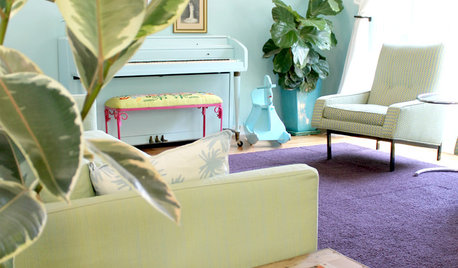
HOUZZ TOURSMy Houzz: Saturated Colors Help a 1920s Fixer-Upper Flourish
Bright paint and cheerful patterns give this Spanish-style Los Angeles home a thriving new personality
Full Story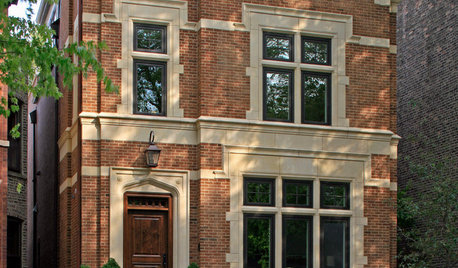
MATERIALSRaw Materials Revealed: Brick, Block and Stone Help Homes Last
Learn about durable masonry essentials for houses and landscapes, and why some weighty-looking pieces are lighter than they look
Full Story
ORGANIZINGHelp for Whittling Down the Photo Pile
Consider these 6 points your personal pare-down assistant, making organizing your photo collection easier
Full Story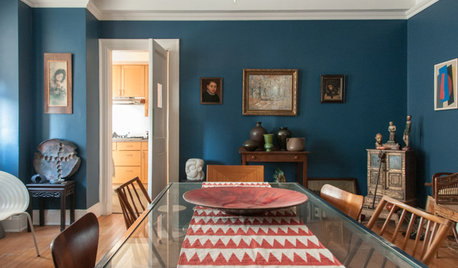
COLORPaint-Picking Help and Secrets From a Color Expert
Advice for wall and trim colors, what to always do before committing and the one paint feature you should completely ignore
Full Story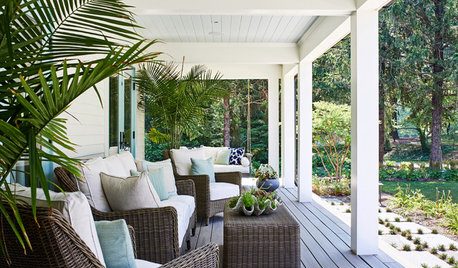
STANDARD MEASUREMENTSThe Right Dimensions for Your Porch
Depth, width, proportion and detailing all contribute to the comfort and functionality of this transitional space
Full Story
LANDSCAPE DESIGNWhat the Heck Is a Ha-Ha, and How Can It Help Your Garden?
Take cues from a historical garden feature to create security and borders without compromising a view
Full Story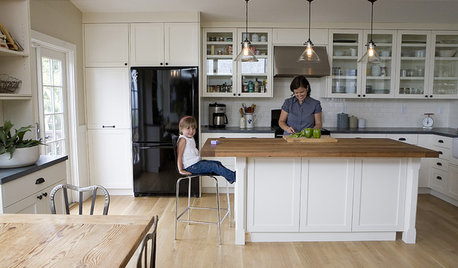
ORGANIZINGDo It for the Kids! A Few Routines Help a Home Run More Smoothly
Not a Naturally Organized person? These tips can help you tackle the onslaught of papers, meals, laundry — and even help you find your keys
Full Story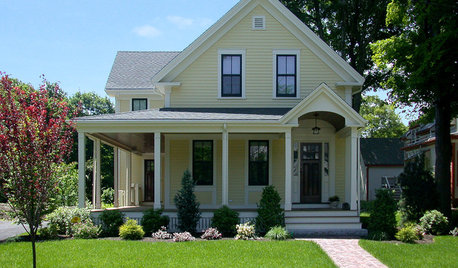
SELLING YOUR HOUSE10 Low-Cost Tweaks to Help Your Home Sell
Put these inexpensive but invaluable fixes on your to-do list before you put your home on the market
Full Story
SELLING YOUR HOUSEHelp for Selling Your Home Faster — and Maybe for More
Prep your home properly before you put it on the market. Learn what tasks are worth the money and the best pros for the jobs
Full Story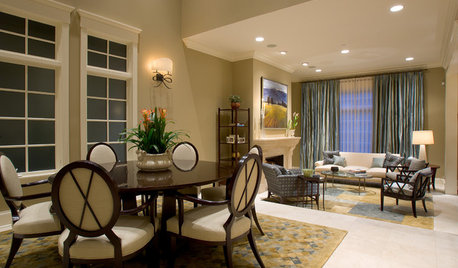
SELLING YOUR HOUSE5 Savvy Fixes to Help Your Home Sell
Get the maximum return on your spruce-up dollars by putting your money in the areas buyers care most about
Full Story



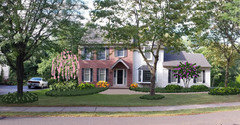


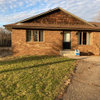

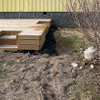

xtremeski2001Original Author